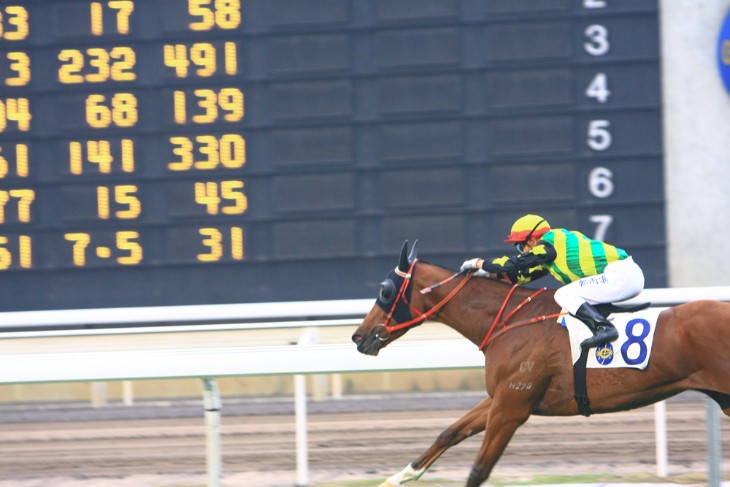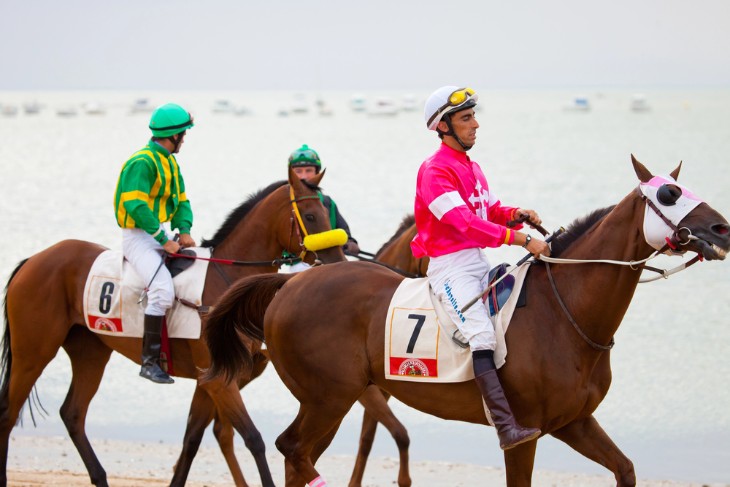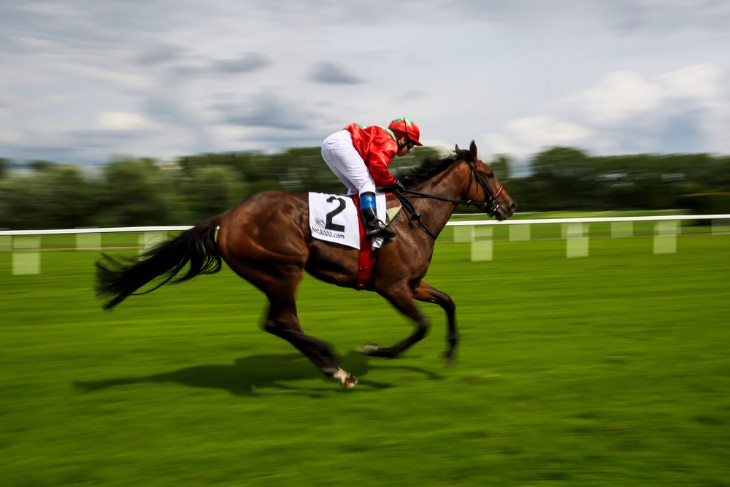- Sprint Races: A Closer Look
- Endurance Races: Understanding the Distance
- Factors Affecting Race Length
- Training Regimes and Race Preparation
- The Role of Jockeys in Race Duration
- Global Variations in Horse Racing
- Technological Advancements and Timing Accuracy
- Comparing Flat and Jump Racing Durations
- Comparing International Race Formats
- The Role of Horse Breeding in Race Duration
- Conclusion
Sprint Races: A Closer Look
Sprint races in horse racing are defined by their short distances and quick completion times. They are the epitome of speed and agility in the racing world. Typically, these races are run over distances ranging from 5 to 7 furlongs (about 1000 to 1400 meters). Due to their brief nature, sprint races usually last less than 90 seconds. The horses participating in these events are often bred and trained specifically for speed, displaying explosive power right from the gate. These races are exciting and fast-paced, capturing the essence of the sport in a fleeting but intense display of equine athleticism.
The strategy in sprint races differs markedly from longer races. Here, the focus is on a strong start and maintaining a high velocity throughout. There's little room for pacing strategies or late surges. The jockeys must be adept at controlling their mounts' energy, ensuring they don't tire prematurely while keeping up with the rapid pace. The breeding of sprint racehorses focuses on fast-twitch muscle fibres, essential for short, high-speed bursts. These aspects combine to make sprint racing a unique and thrilling aspect of the sport, offering a different set of challenges and excitement compared to longer distance races.
Endurance Races: Understanding the Distance
Endurance races in horse racing represent a stark contrast to the swift nature of sprints. These events test the stamina and resilience of the horse and jockey over considerably longer distances. Typically, endurance races can stretch from about 2 miles (approximately 3.2 kilometers) to extreme distances like the 4 miles 514 yards of the Grand National. The duration of these races varies significantly, often exceeding several minutes, with some races lasting up to 10 minutes or more. The primary question of How long does horse racing last finds its most extended answer in endurance racing, where strategic pacing, stamina, and endurance are as critical as speed.
In these races, the jockey's strategy revolves around maintaining a steady pace, conserving the horse's energy for the entirety of the course. Unlike sprint races, endurance events require careful navigation through various terrains and obstacles, particularly in steeplechases and hurdle races. The breeding and training of these horses focus on developing strong, enduring muscles and a high level of cardiovascular fitness. This extended form of racing appeals to those who appreciate the nuanced strategy and the incredible endurance of both horse and rider, making it a unique and vital part of the sport.
Factors Affecting Race Length
The duration of a horse race is influenced by several key factors, each playing a significant role in determining how long the event lasts. One of the primary factors is the race distance, which, as previously discussed, varies from short sprints to long endurance races. Another crucial aspect is the type of track surface. Turf tracks, commonly used in Europe, tend to slow down races compared to dirt or synthetic tracks, as they often have more give underfoot. Weather conditions also play a vital role. For instance, heavy rain can lead to softer, muddier tracks, which can slow down the race and make it more challenging for the horses.
Another factor is the age and breed of the horses participating. Younger horses, often not as experienced or physically developed as older ones, may run shorter distances. The breed of the horse also influences race duration. Thoroughbreds, for example, are bred for speed and stamina, making them ideal for various race lengths. Finally, the strategy employed by the jockeys can affect the overall time. In longer races, jockeys may pace their horses to conserve energy for a final sprint, whereas in shorter races, the approach is generally to run at top speed from start to finish. All these elements combined define the multifaceted nature of horse racing and contribute to the overall experience of the sport.

Training Regimes and Race Preparation
Training regimes for racehorses are meticulously crafted, directly impacting how long horse racing lasts and the overall performance of the horses. For sprint races, the focus is predominantly on building explosive speed and power. This involves short, intense workouts that enhance fast-twitch muscle fibres, crucial for quick bursts of speed. Conversely, endurance racehorses undergo a more varied training schedule, incorporating long, steady runs to build stamina and strength. This training is essential for preparing the horses to maintain a consistent pace over longer distances, a critical factor in longer races.
Nutrition and rest are equally important in these training regimes. A balanced diet, rich in essential nutrients, is vital for maintaining the horse's health and optimising performance. Rest and recovery, including adequate sleep and downtime, are crucial for preventing injuries and ensuring the horse is in peak condition on race day. The horse's physical and mental well-being is a top priority, with regular veterinary checks and mental stimulation exercises to keep them engaged and happy. The culmination of these training efforts is a racehorse ready to compete at its best, whether in a rapid sprint or a lengthy endurance race.
The Role of Jockeys in Race Duration
The jockey's role is pivotal in determining How long does horse racing last and the overall success in a race. In sprint races, a jockey must have impeccable timing and a deep understanding of their horse's capabilities. The start is crucial; a fraction of a second's delay can be the difference between winning and losing. Jockeys need to balance the horse's speed with its ability to sustain that speed throughout the race. They must also be adept at navigating through the field, finding the best path and making split-second decisions.
In endurance races, a jockey's strategy involves carefully managing the horse's pace, ensuring it does not exhaust its energy reserves too early. This requires a nuanced understanding of the horse's condition and the ability to read the race's progress. Jockeys also play a significant role in keeping the horse calm and focused, particularly in the high-pressure environment of a race. Their ability to build a strong bond and understanding with their horse is crucial for success. Thus, the jockey is much more than a rider; they are a strategist, a guide, and a crucial factor in the duration and outcome of the race.
Global Variations in Horse Racing
Horse racing, while universally popular, exhibits significant variations in how long races last across different regions. These variations reflect not just geographical and cultural differences but also distinct approaches to the sport. In the United States, for example, horse racing tends to focus on shorter distances, with most races falling within the range of 6 furlongs to 1 mile. These races, often held on dirt tracks, are characterised by their fast pace and high intensity. In contrast, European racing, particularly in countries like Britain and Ireland, includes a wider range of distances, from sprints to long-distance races, often held on turf tracks.
Asian horse racing, especially in regions like Japan and Hong Kong, has developed its unique style, incorporating elements from both Western and local traditions. These races vary significantly in length, with a strong emphasis on both sprint and endurance races.
Technological Advancements and Timing Accuracy
The progression of technology has played a significant role in horse racing, particularly in answering the question of How long does horse racing last with greater precision. In the early days of the sport, timing races was a manual and often imprecise process, leading to inconsistencies in recording race durations. However, with the advent of advanced timing technologies, such as electronic timing systems and photo-finish cameras, the accuracy of race timing has improved dramatically. These technologies ensure that the duration of a race is measured with utmost precision, down to fractions of a second. This level of accuracy is crucial in a sport where outcomes can be decided by the smallest margins.
Comparing Flat and Jump Racing Durations
Flat and jump racing are two distinct disciplines within horse racing, each with different characteristics in terms of race length. Flat racing, typically conducted on level tracks without obstacles, focuses primarily on speed. Races in this category vary from short sprints of 5 furlongs to longer races of up to 2 miles. The duration of these races can range from just over a minute to several minutes, depending on the distance. The emphasis is on the horse's speed and the jockey's ability to coax the maximum performance from their mount over the racecourse.
Jump racing, also known as National Hunt racing, includes hurdles and steeplechases. These races are generally longer than flat races, often covering distances from 2 miles to over 4 miles. The presence of obstacles, such as hurdles or fences, adds an additional layer of complexity and skill to the race. The duration of jump races is inherently longer, not just due to the increased distance, but also because navigating obstacles requires a different pace and strategy. These races test the endurance and agility of the horse, along with the jockey's skill in managing the pace and ensuring a safe and efficient jump technique.

Comparing International Race Formats
The world of horse racing showcases a rich tapestry of race formats, varying significantly across different countries. In the UK, for example, the focus often lies on flat and jump racing, with prestigious events like the Royal Ascot and the Grand National drawing global attention. These races, steeped in tradition, offer a mix of short, high-speed contests and longer, more endurance-focused events. The variety in race lengths and types reflects the diverse skill sets of the horses and jockeys, from the rapid acceleration required in sprints to the stamina and agility needed for steeplechases.
In contrast, countries like the United States predominantly feature flat racing, with famous races such as the Kentucky Derby and the Breeders' Cup. American races are often shorter in distance compared to their European counterparts, with an emphasis on raw speed and power. The racing surfaces, predominantly dirt tracks, also play a role in shaping the nature of these races. Meanwhile, regions like the Middle East have developed a strong affinity for endurance racing, testing the stamina of the horses over much longer distances, often in challenging desert conditions.
The Role of Horse Breeding in Race Duration
Horse breeding is a critical aspect of horse racing, exerting a considerable influence on race durations. Through selective breeding, horses are developed for specific racing attributes, whether it be for speed in sprints or endurance in longer races. Thoroughbreds, for instance, are renowned for their speed and agility, making them ideal for flat racing. Breeders focus on enhancing these traits, aiming to produce horses that can run faster and more efficiently, potentially leading to shorter race times in sprint events.
On the other hand, for endurance and jump racing, different qualities are prioritised. Breeds like the Arabian are known for their stamina and durability, traits highly valued in endurance racing. In jump racing, a combination of speed, stamina, and jumping ability is essential, leading to a different breeding focus compared to flat racing. The genetic makeup of these horses, combined with rigorous training and conditioning, plays a pivotal role in determining their performance in races.
Conclusion
In conclusion, the question of how long horse racing lasts encompasses a myriad of factors, each contributing to the rich and diverse nature of the sport. From the explosive speed of sprint races to the enduring challenge of long-distance events, horse racing offers a spectrum of durations and experiences. The role of technology in measuring and influencing race times, the impact of weather and track conditions, the strategies employed by jockeys, and the significance of horse breeding and training - all these elements intertwine to shape the duration and outcome of each race.
For more information:








